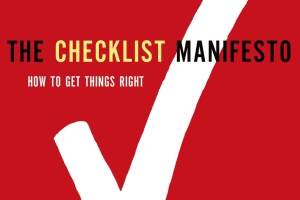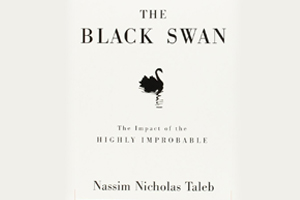Tony Robbins’ book ‘Money: Master the Game’ empowers you by helping you define and understand your personal financial needs. It also dispels several common money myths and suggests a number of tools necessary for achieving financial success. In the book, Robbins uses his gift, his proximity to the top 1% of people in the financial space, to offer curated insights on better managing personal finances and withstanding financial crises. The seven simple steps laid out in the book can help you on your path to financial freedom and serve as a personal financial guide.
Key Takeaways
- Do not underestimate the exponential power of compound interest.
- Choose your financial goals wisely – pick one from the five major goals and stick to it to help yourself believe that financial freedom is achievable.
- Use the three-bucket system to diversify your investments.
- Remember to always measure your finances to ensure that you know how much you are earning, investing, and spending. This can help you organize better and, ultimately, attain financial freedom.
- Make yourself recession-proof by developing key skill sets which will come in handy in all types of markets.
- Do not try to solve all your financial woes at once. Instead, invest 10 minutes, every day, to identify three expenses that can be eliminated from your routine. Once decided, stick to the same.
- Remember to execute what you read. Having knowledge is not the end goal, learn to utilize it towards achieving financial freedom.
The journey to financial freedom requires you to shift from being a consumer to an owner, and this key transition is facilitated by becoming an investor. And, to become an investor, it is necessary to cut through all the information available and execute properly considered steps. The seven steps to financial freedom are:
Step 1
The first step is entering the overcrowded jungle of the financial investment ecosystem. People will give you a variety of advice when it comes to investing but remember, always attain knowledge and then follow your instincts. What works for others might not necessarily work for you. So, listen to everyone but decide for yourself. Also, once you decide your investment plan, ensure that your savings become automatic, thus removing probability from the equation and setting you up for financial freedom.
Step 2
Even as you decide your investment plan and scale, you should also take efforts to become an insider. You cannot learn the rules of the game by remaining on the sidelines. Gain information on the investment ideas that work for your personal financial requirements. Your goals and return requirements are unique. So is your willingness and ability to take risk. Thus, it is important for you to carefully assess your return requirements, risk profile, and investment time horizon and then evaluate investment options.
Step 3
Measure your financial freedom on the basis of the dreams you have. Indeed, you cannot manage your health without knowing your current health score and identifying fitness goals for yourself. Similarly, to handle your finances, you need to take account of your dreams and ambitions. There are multiple levels to your dreams. These are as follows:
- Dream – Financial security:This includes managing funds for covering necessities such as your home loan, utilities, food, transport, insurance, and other items you require on a regular basis. How do you account for this dream? Calculate the expense involved in each item, on a monthly scale, and multiply it by 12 to arrive at your annual secure income. This figure indicates your annual financial security income and your first dream should always be to save enough funds to cover this aspect.
- Dream – Financial independence:Now, let us move on to include other aspects of your current lifestyle – aspects that may be included in luxury. Estimate the cost of your entire lifestyle at present and multiply it by 12 to arrive at the figure you require on an annual basis. Further, multiply it by 20 to arrive at the amount you need to be truly financially independent.
- Dream – Financial freedom:This dream takes into account the funds required for the lifestyle you wish to lead, which is, most likely, above and beyond the lifestyle you are currently leading. All of us have ambitions of rising higher in life, and this dream captures the vision you have for a better lifestyle. To reach this level, pick out three goals that you wish to begin with. Take time to figure out the three things that matter to you the most and also take into account other things that accompany it. Now, calculate the estimated cost for the same and add it to the current annual total that you arrived at in your previous dream.
- Dream – Absolute financial freedom:This part of the dream sequence involves easy access to anything you want, at any time, without having to worry about how to purchase it. Some of you may wish to have access to highly luxurious experiences such as owning a jet, or a sports team. Remember, you need not buy the entire jet or team by yourself. You can also be a part owner to accrue the benefits inherent in such a lifestyle. Start with making a note of the things you want and also take note of the expenses involved. Now, to reach this milestone sooner, you must speed up your financial process. Take consistent efforts to save more money and invest it in lucrative plans. You can do this by identifying your big expenses and cutting back on the same to make way for a future where you attain absolute financial freedom. You must also make efforts to earn more, and always remember to invest a greater portion of your income as and when it increases.
Step 4
While figuring out your investments, keep in mind two things – do not lose your money and do not lose your money. It makes sense to study the investment rules followed by industry heavyweights like Warren Buffett as they can serve as a guide in this process. According to the founder of Vanguard, Jack Bogle, it is better to purchase low-cost, low-fee bond index funds that help spread your risk as it will ensure that you own every part of the bond market. Mary Callahan Erdoes of J.P Morgan suggests that portfolio rebalancing is a powerful tool which should be utilized wisely and systematically. According to her, it is important to rebalance constantly as that is how often the portfolio might fall out of tune when considering the original plan. While most investors only rebalance once or twice a year, remember that your plan need not be set in stone. It can alter based on market conditions and you should undertake constant, but not obsessive, evaluation.
The four most important things to remember here include:
- Importance of asset allocation – diversify between your security and your growth bucket. Diversify across asset classes, markets, and investment time frames.
- Do not wait for the perfect market time or scenario as that would lead to a waste of precious investing time. Use averaging and believe that volatility could help you by offering you opportunities to invest in assets cheaply when the markets are down. Such a move will raise your portfolio value when the markets inevitably rise again.
- Create short- and medium-term goals too, instead of just working towards a singular long-term goal. This will help you enjoy the fruits of your hard work along the way and keep you motivated for longer. It is best to experience the advantages of your investments in a consistent manner.
- Finally, remember to use rebalancing and tax harvesting to optimize your returns and mitigate potential losses.
Step 5
Even as you move towards absolute financial freedom, keep in mind that your aim is to enjoy the upside without falling prey to the downside. It is important to figure out a lifetime income plan to ensure this goal. How can you ensure that you have a lifetime income even though you may retire at an early age? Planning and astute investment can be your best friends in this scenario. Check your portfolio to see whether your corpus is divided equally between asset classes, and whether your investments are equal in risk to ensure balance. A system you can follow safely includes the following features:
- Invest 30% of the corpus in stocks listed to diversify your equity basket
- Park 15% in the intermediate term. Seven- to ten-year fixed-income papers are a good option for this investment as they provide safety and steady returns
- Invest 40% of the funds in long-term bonds like treasuries with maturities ranging from 20- to 25-years.
- Finally, invest 7.5% of the corpus in gold, which is a safe haven asset, and 7.5% in the commodities market.
Step 6
Study the playbooks of billionaires to design financial strategies that will help you boost your financial worth. There are only four rules to remember and follow:
- Obviously, the first is to not lose your money. Take educated and well-informed decisions and do not take excessive risk in the hopes of earning high returns.
- Two, you should only risk one dollar to earn five in return. That is the ratio you should work towards. Three, study the market, anticipate potential outcomes, and diversify your portfolio to maximize returns and minimize risks. Diversification is, truly, the name of the investment game as it keeps you secure while also boosting the gains you accumulate.
- Finally, remember that you are never done. You should continue to learn and continue to save to ensure a lifetime income and enjoy a happy retired life.
Step 7
The last step to remember is that you must take action to boost your happiness. Earning and saving money is aimed at ensuring your financial security and happiness in the long run. So, learn how to spend money in a way that makes you happy. Money, as they say, cannot buy happiness. However, it can help you buy things and have experiences which boost your happiness. Use your hard-earned money to invest in new experiences as these are what you will remember for life. Also use it to buy more time to spend with yourself and the people and things you love. Not having financial freedom means you would be stuck in the work routine all your life. Money ensures freedom. Finally, remember to invest in others as making others happy can also increase your happiness.
In these seven steps lies the path to financial freedom. The good thing is that you don’t need to be alone on this journey. You can seek the help of a financial planner who can assist you in determining your risk profile, clearly articulating your return requirements, and then creating a customised asset allocation strategy. Once this is done, you can seek to choose to invest in mutual funds. This investment vehicle can help you diversify your investment portfolio as per your asset allocation strategy by giving you an option to invest in multiple asset classes like equity, debt, gold, etc. They also give you the advantage of having your money managed by expert fund managers. Most importantly, when you invest in mutual funds, you can choose to automate your investments through the Systematic Investment Plan (SIP) route. When you invest in a mutual fund via the SIP route, you invest a fixed amount of money in a mutual fund scheme of your choice. Further, these investments are made as per your chosen time intervals which could be fortnightly, monthly, or even quarterly. The best thing is that you can start your SIP investment with as low as Rs. 100. This ensures that you can start your financial planning journey almost immediately.
An investor education initiative
All Mutual Fund Investors have to go through a onetime KYC process. Investor should deal only with Registered Mutual Fund (RMF). For more info on KYC, RMF and procedure to lodge/redress any complaints – please visit onhttps://www.edelweissmf.com/kyc-norms
MUTUAL FUND INVESTMENTS ARE SUBJECT TO MARKET RISKS, READ ALL SCHEME RELATED DOCUMENTS CAREFULLY.
Trending Books
MUTUAL FUND INVESTMENTS ARE SUBJECT TO MARKET RISKS, READ ALL SCHEME RELATED DOCUMENTS CAREFULLY.













